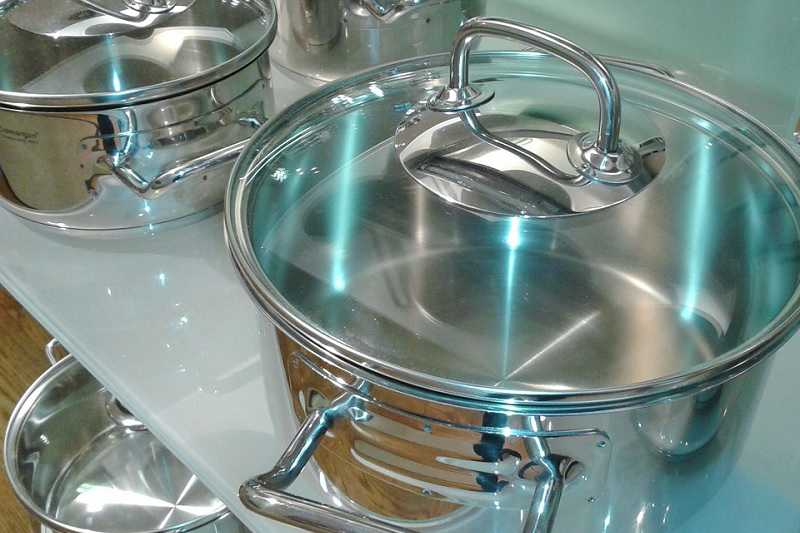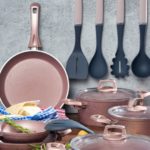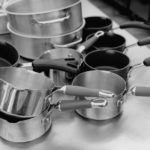Cast iron cookware is known for being the best in the business. It is the gold standard that any home cooking addict needs in their kitchen.
You can also get aluminium, steel, or stainless steel pots and pans as an alternative. Yet regardless of the metal used, much of the cookware around is today coated in enamel.
The classic Le Creuset pans are a great example of quality enamel cookware any keen cook would be lucky to have in their home.
But what is cookware enamel made of? And is this material safe to use as cookware?
In this article, we delve into how cookware enamel is produced and its advantages and disadvantages in the kitchen.
What Is Enamel Cookware Made of?
Porcelain enamel is a vitreous (glass-like) coating made from powdered glass that can be used to coat any piece of cookware.
The cookware is coated by fusing the powdered glass to the metal at extremely high temperatures.
Most commonly, it is used to coat aluminium, steel, and iron pots and pans to make them naturally non-stick.
Cookware enamel is also a strong material perfect for use in kitchens.

Enamel Cookware Pros and Cons
Not all cookware is coated in porcelain enamel, so is it better to use enamel pans or non-enamel pans?
This is largely down to personal preference, but below are some advantages and disadvantages of cookware enamel to help you decide which pans to get for your kitchen.
Advantages
One of the biggest advantages of cookware enamel is that it gives the cooking pots and pans a natural non-stick quality.
This is thanks to the low porosity of the material and means that no non-stick chemicals are used during production. Therefore, it is better for you and the planet.
Enamel cookware is also extremely resistant to wear and tear. Take the iconic Le Creuset pans again – these can be used safely at temperatures of up to 250°C and will last a lifetime.
Other advantages of cookware enamel include:
- Extremely strong material
- Resistant to scratches and stains
- Rarely peels or fades with use
- Easy to wash and wipe clean
- Can be used to cook any food
Disadvantages
Of course, enamel cookware isn’t perfect and there are some disadvantages. The main issue is with poor-quality brands that coat their enamel pots and pans in chemical non-stick coatings. This is entirely unnecessary as the material is naturally non-stick and uses unnecessary chemicals which can leach into the environment and your food.
Not all enamel pans can be used over high heat for long periods either – this again all boils down to quality.
Therefore, if investing in cookware enamel, you’ll want to splurge on the good stuff.
However, this also brings us to another drawback; enamel cookware is known for being expensive. This is especially true for porcelain enamel cast iron pots and pans.
Is Enamel Cookware Safe?
Many people are concerned about the safety aspect of using non-coated metal pans to cook in. This is because metal can leach into the food during cooking, especially when cooking acidic foods. Excess metal ions in the body are linked with several serious health problems.
But, thankfully, enamel cookware is an extremely safe option. Because of the strength and stability of the coating, the protective layer won’t break down and is entirely non-reactive. This means you can use enamel pans to cook even the most acidic foods without health concerns.
Nevertheless, cracked and chipped enamel pans aren’t as safe. Consider getting new cookware if this happens, and remember to opt for quality, trusted brands so your enamel cookware lasts a lifetime.

Hannah is a freelance content writer and self-proclaimed foodie. When Hannah isn’t sitting tapping at her laptop, you’ll probably find her in the kitchen. As an ex-chalet host, she’s used to cooking four-course meals for 10+ people and loves feeding friends and family whenever possible.







